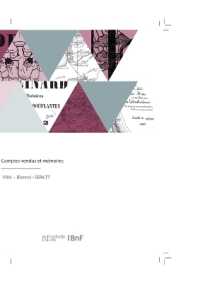Full Description
The structural features responsible for the immunogenicity of certain parts of native protein molecules have been of interest to immunochem ists and protein chemists for over three decades. However, until re cently no concerted effort was (or could be) devoted to the elucidation of the complete antigenic structure of a protein. In order for these en deavors to be successful and meaningful, knowledge of both the amino acid sequence and the detailed three-dimensional structure of the protein is necessary. Such information was not available for a protein until early in the 1960s. This and the fact that protein chemistry was not in fact sufficiently developed early in the 1960s to enable the successful unrav eling of the entire antigenic structure of a protein were major reasons for the slow progress in this field. Determination of the antigenic structures of proteins, therefore, posed a chemical challenge of enormous propor tions. For these reasons, many investigators diverted their attention to study of the immunochemistry of amino acid polymers in the hope that the information derived from these systems might prove useful in the understanding of the immunochemistry of proteins. A great many data on these systems were accumulated that have provided valuable infor mation on the immune mechanism. Unfortunately, it has now become clear the information from amino acid polymers has not helped in under standing the immunochemistry of proteins.
Contents
1 Effector Sites on Antibodies.- I. Introduction.- II. General Structure and Organization of Immunoglobulins.- III. Effector Functions Mediated by Antibodies.- IV. Conclusions.- V. References.- 2 Antigenic Features of Immunoglobulins.- I. Introduction.- II. Basic Features of Antigenic Determinants.- III. Constant Region Determinants.- IV. Allotypic Markers.- V. Variable Region Determinants.- VI. Interspecies Antigenic Determinants.- VII. Other Significant Immunoglobulin Determinants.- VIII. Summary and Conclusions.- IX. References.- 3 Combining Regions of Antibodies.- I. Background.- II. Structural Studies.- III. Structure-Function Relationships.- IV. Biological Significance of Antigen Binding.- V. Summary.- VI. References.- 4 Biochemistry and Biological Reactions of Complement Proteins.- I. Introduction.- II. Classical Pathway.- III. Alternative Pathway.- IV. The Complement Attack Mechanism.- V. Conclusion.- VI. Addendum.- VII. References.- 5 Immunochemistry of Bovine Serum Albumin.- I. Introduction.- II. Structure of Bovine Serum Albumin.- III. Immunochemistry of Chemical Derivatives of Bovine Serum Albumin.- IV. Immunochemistry of Fragments of Bovine Serum Albumin.- V. Immunochemical Studies on Human Serum Albumin.- VI. Structural and Immunochemical Studies on Serum Albumin from Various Species.- VII. Conclusion.- VIII. References.- Author Index.






